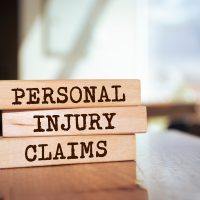Understanding the Personal Injury Claim Process

If you’ve been injured due to someone else’s negligence in a car crash or slip and fall, you might know that they owe you for your medical bills, lost income, pain and suffering, and other legal damages. But knowing you are entitled to compensation and knowing how to get it are two different things. The path to compensation is fairly straightforward, but make no mistake that it is a process that affects your legal rights and should not be undertaken without skilled legal help. Below we outline the basic steps in the personal injury claim process in California. If you or a loved one has been hurt by the negligence of another in Los Angeles or the Antelope Valley, call the Kistler Law Firm for a free consultation with an experienced Lancaster personal injury lawyer.
Initiating the Claim: Seek Legal Representation
This may sound self-serving, but the first step in the personal injury claim process truly is to consult with a qualified personal injury attorney. Personal injury lawyers and law firms will almost always offer a free initial consultation to evaluate your claim and let you know what you can expect, and they won’t charge you any fees until after they have won your case. So it costs you nothing to seek advice from a lawyer, and taking this step before you do anything else will help you avoid mistakes and put you in the best position for a successful resolution of your claim that recovers the maximum amount of compensation available.
Collecting Evidence: Documentation Is Key
Once you decide to move forward, your attorney will help you collect all necessary evidence. This includes medical records, accident reports, photographs, and any witness statements. Proper documentation is essential for building a strong case, and your attorney will guide you through this important phase. Keep copies of all bills, receipts, and correspondence with relevant individuals and groups, including medical providers and insurance companies. Documentation is key to proving the other party’s liability as well as the amount of your damages.
Negotiation and Settlement: The Art of Compromise
When the time is right to settle your case, your attorney will negotiate directly with the insurance company to resolve your claim for a fair amount. This usually doesn’t occur until you are declared “medically stationary” by your healthcare provider, meaning you reached a level of “maximum medical improvement” regarding your injuries. At this point, your present and future costs should be sufficiently well-known to engage with the insurer for a settlement.
While most personal injury claims are resolved through negotiation and settlement, some cases may need to proceed to litigation. Negotiations typically occur between your attorney and the defendant’s insurance company. Your attorney will work diligently to secure a fair settlement that compensates you for your injuries, lost wages, and other damages.
Filing the Complaint: Legal Paperwork
In some cases, it might be necessary to file a lawsuit. This could happen because the insurance company denies liability, disputes the severity of your injury, is taking an unreasonably long time to settle the case, or is not willing to settle for an appropriate amount. Your attorney will advise you on whether proceeding with a lawsuit is in your best interest, but the decision will ultimately be yours to make. A lawsuit begins by filing an official complaint against the at-fault party. This legal document outlines the specifics of your case, the damages you’re claiming, and how the defendant’s actions resulted in your injuries. The defendant is then served with the complaint and has a set time to respond.
Pre-trial Proceedings: Discovery and Depositions
The pre-trial phase includes discovery, where both parties exchange evidence and information in each other’s possession. Depositions, or sworn statements, may also be taken from witnesses and experts to build your case. Attorneys on both sides might also file motions with the court seeking an early resolution of the case or other key determinations. Your case can settle at any time during this phase, and your attorney will work diligently to seize any opportunity for settlement while continuing to work on your case.
Should negotiations stall or fail to produce a satisfactory outcome, your case may go to trial.
Trial: The Final Showdown
If a settlement is not reached, your case will go to trial in a Los Angeles courtroom, such as the Michael Antonovich Antelope Valley Courthouse in Lancaster. During the trial, both parties present their evidence and arguments. Ultimately, a jury or judge will decide the outcome, determining if the defendant is liable for your injuries and, if so, the amount of compensation you’re entitled to.
Post-Trial: Appeals and Compensation
After the trial, the losing party may opt to file an appeal. If you win your case, it may still take time to receive your awarded compensation, especially if the defendant chooses to appeal. Your case might also require post-judgment proceedings to collect what is owed, such as bank levies or wage garnishments. If the party is covered by insurance, however, these steps won’t be necessary.
Help Is Available Navigating the Personal Injury Claim Process in Lancaster
Navigating the personal injury claim process can be a daunting task if you try to go it alone, but with the right legal representation, you can improve your chances of a favorable outcome. Kistler Law Firm is dedicated to helping clients like you steer through this complicated legal landscape to a successful conclusion. Consult our skilled attorneys at 661-206-6990 for a free consultation and immediate assistance on your Lancaster personal injury claim.

